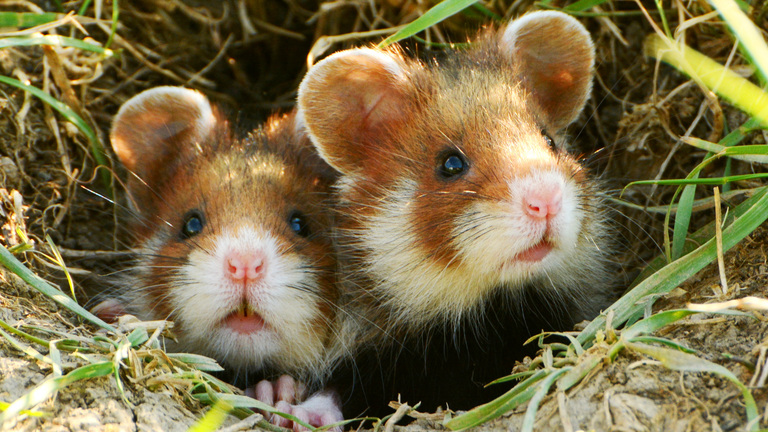Differences in Behavior by Hamster Type
Hamsters are delightful small pets that come in various types, each exhibiting distinct behaviors. Understanding these differences is crucial for pet owners to provide the best care possible. This article will delve into the behavioral traits of different hamster species, discussing how each type behaves in relation to habitat, handling, social interactions, and more. Ultimately, recognizing these behavioral differences can enhance your relationship with your pet hamster.
Behavioral Traits of Common Hamster Types
Each hamster type has unique behavioral traits influenced by their species and natural habitat. Syrian hamsters are often solitary and territorial, while dwarf hamsters are more social and can thrive in pairs or small groups. Knowing these key differences will help pet owners create a suitable environment for their hamster’s specific needs.
Syrian Hamster Behavior
Syrian hamsters, also known as golden hamsters, are known for their solitary nature. This species prefers to live alone, as they can be quite territorial, especially when it comes to breeding or space. They often express a healthy level of curiosity and a tendency to explore their environment. When handled appropriately, Syrian hamsters can become very affectionate towards their owners, enjoying interactions such as gentle petting and digging through tunnels.

Dwarf Hamster Behavior
Dwarf hamsters, including species like the Campbell’s dwarf and Roborovski, are much more social than their larger counterparts. These species can form social bonds and are often found in pairs or small groups in captivity. However, introducing dwarf hamsters requires patience to ensure compatibility. They tend to exhibit playful behavior, such as chasing one another and sharing resources. Dwarf hamsters also communicate through squeaks, chirps, and even the occasional purr when content.
Chinese Hamster Behavior
Chinese hamsters are somewhat of a middle ground between Syrian and dwarf hamsters. While they can be solitary, they display a unique curiosity and boldness that may lead them to be more social than Syrians. They enjoy exploring and can become great escape artists if their cages aren’t secured. When being handled, Chinese hamsters may initially show signs of wariness, but with consistent gentle handling, they can become comfortable with their owners, displaying affectionate behaviors like licking and cuddling.
Social Interactions Among Hamster Types
Interactions among different hamster species can vary greatly. Recognizing how these types communicate or act around each other can help owners mitigate issues and encourage positive interactions when necessary.
Territorial Nature of Hamsters
Syrian hamsters, as a more territorial species, tend to exhibit aggressive behavior when housed with other hamsters, especially during social introductions. This aggression usually stems from their instinctual need to guard their territory. It’s crucial for owners to keep Syrian hamsters separate to ensure their well-being. On the contrary, dwarf hamsters often enjoy companionship but should still be monitored for signs of dominance to avoid conflicts in paired setups.
Handling Techniques for Different Types
Handling hamsters requires understanding their comfort zones. For Syrian hamsters, the approach is essential; using a gentle and non-threatening method helps them feel safe. It’s recommended to scoop them up from underneath rather than gripping them from above. Dwarf hamsters, with their social tendencies, may enjoy exploring their surroundings more freely and can be encouraged to climb onto your hand or arm for exploration, which can enhance bonding experiences.
Environmental Factors and Indoor Habits
The type of environment you provide for your hamster greatly impacts their behavior and overall health. Different species have unique ecological demands that should be honored for them to thrive.
Habitat Preferences
Hamsters are naturally burrowing animals. Syrian hamsters typically prefer deeper bedding that allows them to dig and create tunnels. This behavior mimics their natural instincts and keeps them engaged and happy. Dwarf hamsters also appreciate tunneling but may require less depth in bedding compared to Syrian hamsters due to their smaller size. Dedicated enrichment with toys, tunnels, and chewable items, like wooden blocks, can significantly improve their well-being.
Activity Patterns
Most hamsters are nocturnal, meaning they are most active during the night. Understanding these patterns allows owners to plan interaction periods wisely. Syrian hamsters often engage in running on their wheels, burrowing, and exploring at night. For dwarf hamsters, consistent active behavior throughout the night signals that they are healthy and engaged. Providing a quiet, safe space reduces stress and enhances their natural behavior, allowing owners to observe their night-time escapades.
Key Takeaways
- Understanding specific behaviors of Syrian, dwarf, and Chinese hamsters is crucial for enhancing pet relationships.
- Observing social dynamics can aid in successful hamster pairings, particularly with dwarf hamsters.
- Proper handling and habitat design contribute significantly to the health and happiness of the specific hamster type.
FAQ
1. Do hamsters need a companion?
Not all hamsters require companionship. Syrian hamsters are typically solitary and thrive alone, while dwarf hamsters often benefit from housing with a partner. Social compatibility and monitoring behaviors are essential when introducing cage mates.
2. How can I tell if my hamster is happy?
A happy hamster will exhibit burrowing behavior, running on their wheel, and being active during their normal playtimes. Gentle instances of vocalizations and willingness to interact with their owners are also good indicators of contentment.
3. What is the best type of bedding for hamsters?
Soft and absorbent bedding like aspen shavings or paper-based products work well for hamsters. Avoid cedar or pine shavings due to potential respiratory issues. The depth of the bedding should cater to the digging habits of the specific hamster type.
4. Can hamsters of different types live together?
No, hamsters of different species often exhibit aggressive behaviors due to territorial instincts. Keeping them separated is crucial for their safety and well-being.
5. How can I bond with my hamster?
Spend time gently handling your hamster, allow them to explore in a safe space, and provide engaging toys. Consistent interaction and positive reinforcement help build trust between you and your pet.
